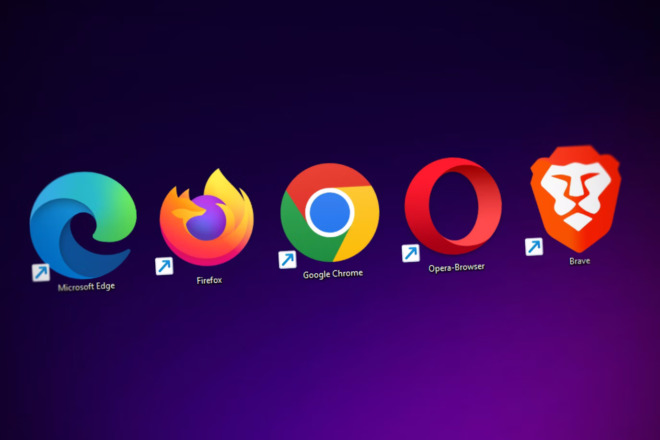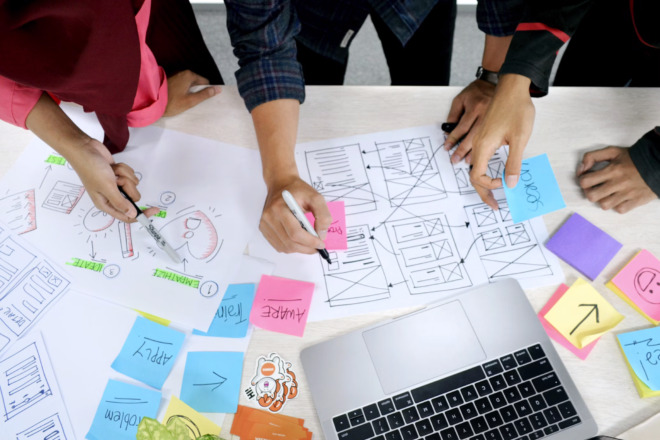Your online presence consists of many platforms, experiences and visual styles in today’s world. You have your company website, social profiles, email campaigns, favicons, packaging and much more. While there’s likely an overarching theme carried from platform to platform, for the most part, each portal gets a different version of your brand. That is, if you don’t use static logos.
On Facebook and Twitter, for example, you get a larger cover photo to coincide with your profile picture. On Instagram or Pinterest, that’s not the case. So, when choosing a picture that best represents your brand across these platforms, the visual content is going to change. On Facebook or Twitter, you could upload a photo with the entire brand logo spelled out. On Instagram or Pinterest, however, you might simply upload an icon or portion of your brand logo.
In doing this, you are using a dynamic logo as opposed to a traditional static one. Static logos, at least in today’s market, are not recommended.
What Are Static Logos?
Simply put, when something is considered static, it is either unchanging or unmoving. In the case of static logos, it just means the same logo design is used wherever and whenever your brand makes an appearance. This include logo placement on your website, social profiles, shipping materials, email and regular mail newsletters, and more.
Static logos use the same colors and styles, and have almost no variation from platform to platform.
What Is a Dynamic Logo?
A dynamic logo is one that changes shape, size, style and even color. You might have a monochrome logo design for certain sites and a full-color version for others. Another, less common, form of dynamic logo is one that is animated.
A dynamic logo is designed to change, but it doesn’t do so just for the heck of it. When it does take a new form, it’s to adapt to a particular portal or medium. An icon version of your logo would be ideal for smaller image placement. The full-color, full-text version is ideal for larger high-resolution placement, such as in your website header or social cover photo.
Regardless, the use of such a logo provides more fluid identity for your brand or business, which is necessary in today’s market.
A Visual Change Should Not Be Jarring
Rule No. 1 of converting static logos to a dynamic form is that the logo should not be jarring to your customers and regular audience. Even though it changes, it should do so in a way that your audience can easily recognize or identify your brand.
Common practice is to take your existing logo and change it up in a subtle way to meet new specifications. Your full-color logo, for instance, might simply be updated to black-and-white colors, yet the visual design remains the same.
Even when doing something drastic like fully animating your logo, it should still be recognizable. You might take your existing logo and add shifting or moving parts, for example.
To better understand this idea, it makes sense to take a look at a few real-world examples of brands and companies that updated their static logo effectively.
1. Airbnb
The Airbnb customized Bélo is a great example of dynamic logo and brand identity. The logo, or Bélo icon, shows up on a variety of portals and networks, especially mobile where there’s limited screen real estate. The company also has a plain text version of its name, which serves as an additional logo.
More importantly, you can see how it deploys the separate styles and variations in the real world, too—from keychains and decorative items to print advertising and billboards.
2. Slack
Slack, a collaboration and communication tool, also makes great use of a dynamic logo. Its icon and off-kilter hashtag comes in various colors and styles, and sometimes accompanies its full brand name in a single, dark-gray font.
The ideal system used for doing such a thing is called a logo system, or framework. Essentially, it involves creating a base image or style that can be altered to fit specifications and limits. A solid, full-color brand name and icon logo, for instance, can be easily swapped to monochrome. This allows the overall logo to be flexible and dynamic, without sacrificing brand recognition.
3. Fubiz
If you’re interested in doing something a bit more innovative and eye-catching, then you can follow Fubiz’s example.
Rather than come up with the visual variations — simply changing color or style — Fubiz animated its logo in a variety of ways. This makes a lot of sense, considering the company is known for its relation to pop culture and art.
You’ll notice in the image that each logo variation remains the same color and uses the same typography. The only difference is the rotating animation each one features. You can see a wide selection of styles, ranging from an opening laptop to a functioning soundwave. It also highlights the importance of subtle changes from the logo in variation to variation, in the interest of retaining brand recognition.
4. Guinness
With a company like Guinness that has an incredibly long history, changing things up can be troublesome. Not because the act of creating new visual elements or styles is difficult, but because your customers know your brand, your logo and what to seek out. Making too drastic a change can have a negative effect on performance, especially if customers no longer know where or how to find your products or brand.
With Guinness as the example, you can see how it revamped its classic logo and made it responsive for a variety of viewpoints and platforms. Starting with the main tried-and-true logo, you have the name and accents. In the final image you simply have the Guinness logo, ideal for smaller visual sections or something like a minimized profile picture.
Get With the Times: Go Dynamic
Whether you like it or not, you’re going to have to adapt even a static logo to meet the specifications and limits of various platforms. You simply cannot use the same resolution image on a social account as you can on your website. A certain portion of the logo may be cropped or deleted entirely. Furthermore, it looks unprofessional to have an image that is not properly designed for the portal in question.
That’s why it’s incredibly important that you turn your logo dynamic, or interchangeable with separate styles, colors and sizes. Aside from the fact that it looks great, it also improves the reputation of your brand.
About The Author
Eleanor Hecks is the Editor-in-Chief of Designerly Magazine, an online publication dedicated to providing in-depth content from the design and marketing industries. When she's not designing or writing code, you can find her exploring the outdoors with her husband and dog in their RV, burning calories at a local Zumba class, or curled up with a good book with her cats Gem and Cali.
You can find more of Eleanor's work at www.eleanorhecks.com.





